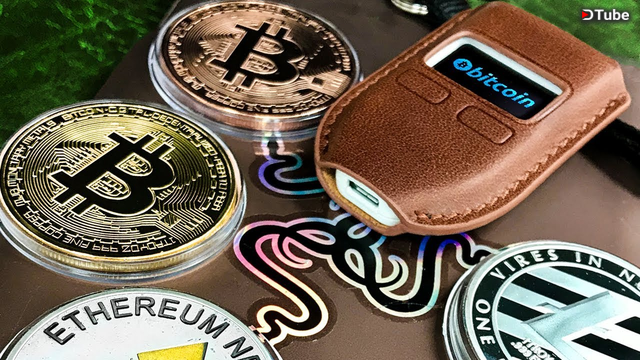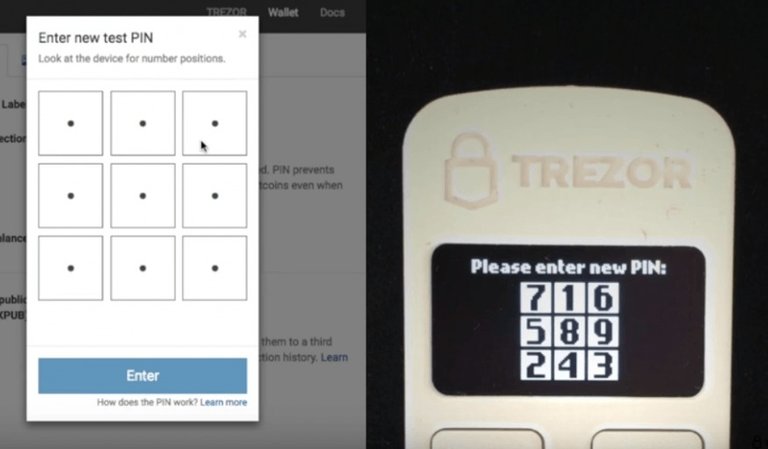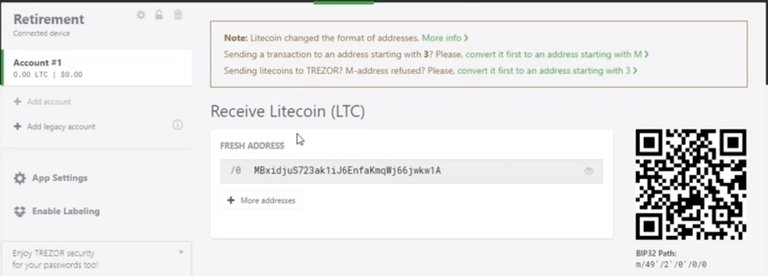
Whats up everyone! As a crypto user, hardware wallets are an absolute must to keep your hard earned coins safe! On this post and video, we're going to take a look at the Trezor Hardware wallet from Satoshi Labs and talk about how to get set up so you know your portfolio is secure!
Obviously many people know that one of the big draws to cryptocurrency is the security provided by the blockchain...But one of the biggest misconceptions about cryptos is that because the blockchain is essentially unhackable, so are an individual’s wallets. Simply put, this is absolutely not the case; so long as a person keeps their wallet keys on a computer or phone, those wallets and coins are at the mercy of hackers (especially if it is an online wallet through a third party...*cough diaryofahackedman *cough)
The answer? Use Hardware Wallets!
These specialized hardware devices are essentially encrypted lock-boxes for those valued digital currencies you've been endlessly hodling!
On this review and tutorial, we’ll be looking at my current favorite choice, the Trezor wallet by Satoshi Labs (while there are offerings with more variety, I consistently find myself returning to Trezor as my go to wallet). It should be noted that they do currently have a new model (the Trezor Model T) in production, but I’ll be using the original model for this video. We’ll be covering all the necessities to getting started storing your Bitcoin and altcoins securely and offline via hardware wallets. After we get everything set up, we’ll jump into how to create your first deposit transaction onto the wallet (Litecoin will be used for this video, but the process is identical for ETH/ERC20 tokens).
The set up process truly is simple.
We'll kick off by plugging the device in and heading over to trezor.io/start. You can sign up for the newsletter but I'm not a fan of adding more junk mail to my overflowing inbox so we're going to head right into the setup! Now, if you're on chrome they do have a built in extension which can be found in the chrome web store over here.
First things first, name the device! Remember, you can change this at any time so there is no need to spend eons mulling over it.

Once you've picked a name you'll be prompted to set up a pin. Now this little feature is the crown jewel of hardware wallet systems. By giving you a blank numpad and scrambling the on device digits, you are able to securely enter pins, even on a spyware or keylogger infected pc. This on device pin pad will scramble every time its used so make sure to double check your inputs! Personally I believe a four digit pin is likely sufficient for average users, but I highly suggest an 8+ digit pin for high value wallets.
So once we've got our pin set up its going to give us our linguistic recovery phrase. I truly can not stress this enough: NEVER ENTER KEYS ON A PC! These keys should be written down in more than one spot on a piece of paper and kept as secure as humanly possible. Without these keys, a device loss equates to total fund loss, and a hacker can easily sweep your funds with them as well. On that same note, we know everyone hates a lengthy double check...but seriously, look through every recovery word as it asks you to confirm, one missed letter and bye bye Bitcoin!
Alright folks, the rough stuff is over! As of now you officially have a bulletproof crypto lockbox....but how the heck do you use it?!?!
It really is quite simple to get your first deposit set up. All we're going to do is select our desired crypto from our account drop down and the left and head over to the receive tab. There's no need to generate a new address but I find it's useful to create multiple if you receive payments from multiple sources just for accounting ease.

Now naturally you are given a public key that can be used, but one of the features about the Trezor that I absolutely love is that it automatically generates a QR code that can be scanned with any mobile device! For this example ill be sending from bittrex however so we'll just be copying the code over. And thats that! Enter in your address and you should see your first deposit coming in shortly!
Anywho, hope you guys got some useful info out of this and are ready to get kicking with a Trezor Hardware Wallet! And we want to hear from you guys, do you keep your cryptocurrency safe in an offline hardware wallet? If you already use a cold storage wallet (like the Trezor), let us know which one you use in the comments below!
https://goo.gl/XtrCJv
▶️ DTube
▶️ IPFS
How do I get one?
See the link in the body of the post above.
Wow thats initiative and informative content..cryptocurrancy is the exchanging market in the world..thnaks
Always glad to help!
I love this.....can a student invest in crypto? @crytoplayhouse.... And how...
Yes, of course he/she can. You just need to take it a step at a time and educate yourself first. Too many people rush into this market due to FOMO. Become a successful trader or investor is not about that. Start by going through our DTube videos and Steemit posts and ask a lot of questions!
Are these things available in countries other than the USA?
Yes they are. What country are you from?
Wow @cryptoplayhouse this is very good information, i really wanna join crypto-world!
Awesome! The more people that get into crypto, the better for the entire world!
Wow! Copy that @cryptoplayhouse
Most recent user guide released on: May 14th
As a friendly reminder, the current upvote fee is $0.12 SBD ($0.121 for incognito). Current 300%+ upvote is now $0.36+ SBD.
Join our 10 SP Challenge!!!
Simply click this link to delegate 10 SP Now!
Or delegate any of these other amounts and make a "striking" return on your investment!
50 SP --- 100 SP --- 200 SP --- 500 SP --- 1000 SP
That being said...
Investors who delegate SP to @thundercurator are entitled to 75% of @thundercurator income after curation. Get on-board early and grow with us!